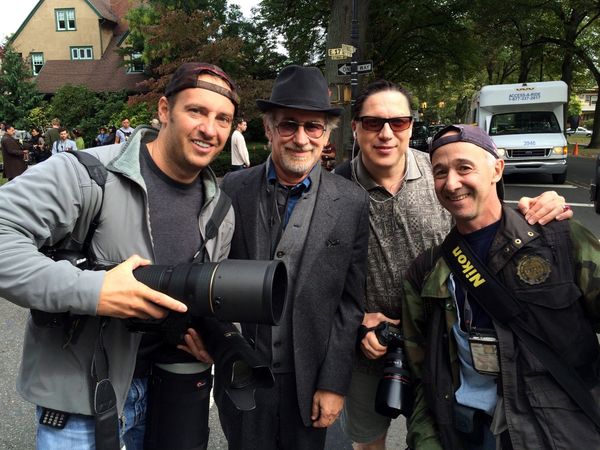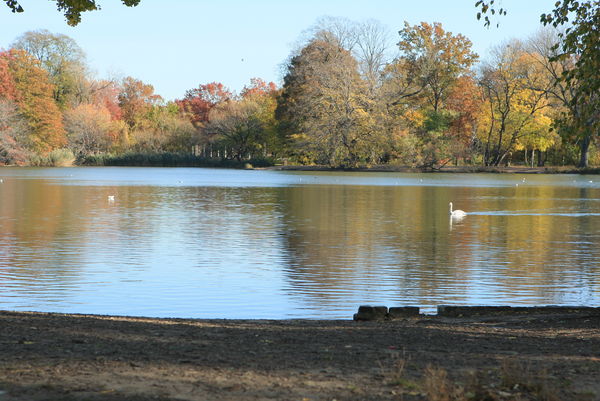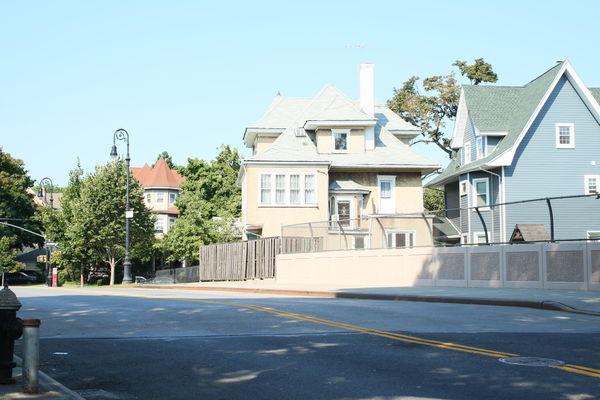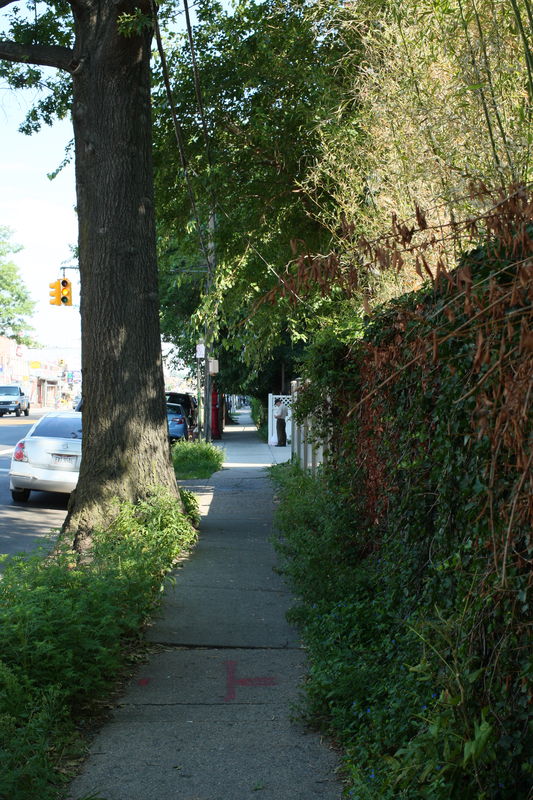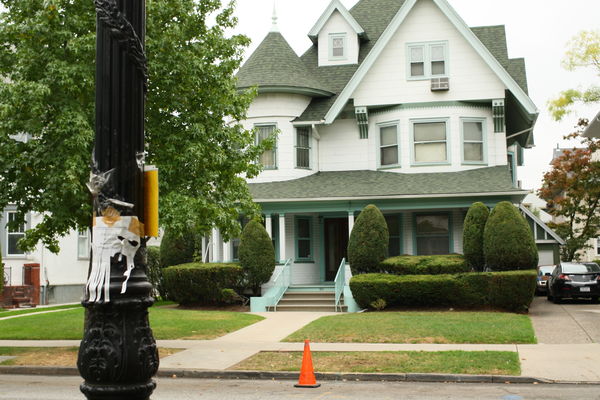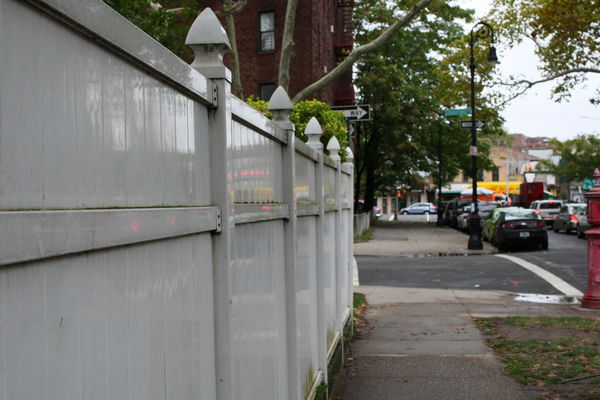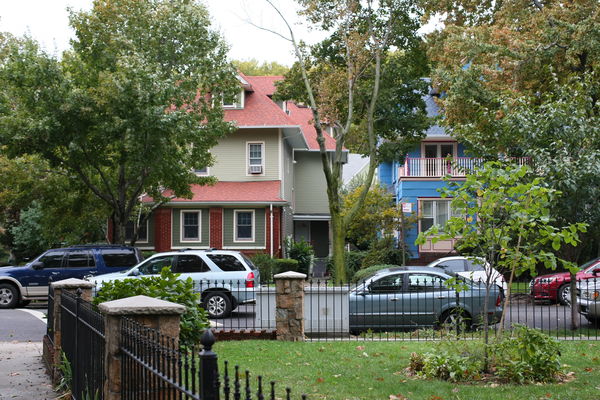Check out Astronomical Photography Forum section of our forum.
Posts for: Aldente
May 17, 2018 17:40:38 #
Eating vegetables, aside from anything else, alkalizes your body as opposed to making it more acidic. All ailments (germs, bacteria, viruses, inflammations, etc.) absolutely LOOOVE acidic environment in the body, so the more you alkalize it, the healthier you will be.
That's as condense of an explanation as I'm willing to go into without delving into hours-long discussions...
:-))
...And as for the "sharpness" factor, I think the app might suggest the use of smaller aperture, which in turn might give your photos overall sharper look.
That's as condense of an explanation as I'm willing to go into without delving into hours-long discussions...
:-))
...And as for the "sharpness" factor, I think the app might suggest the use of smaller aperture, which in turn might give your photos overall sharper look.
May 17, 2018 09:33:38 #
I never expose the lens front element to air -- always have it covered with a UV filter. (When I buy a new lens, I always have a UV filter ready, so the new lens is exposed to air for just a couple of seconds before UV filter is put on).
So, though I can't comment on cleaning the actual lens glass, I clean the filters.
And the way I clean UV/GND & other filters is quite nontraditional and many might find it objectionable.
I use a supermarket brand bag of 400 very plain but "strong-n-Soft" 400 1-ply napkins - not the super-cheap brands (because they fall apart when wet), but expressly having a "strong-n-soft" logo for their durability.
Previously, I tried various kitchen paper towels, but they all constantly leave smudges that cheaper napkins do not.
Then I use a bottle of "Cinch" streak-free glass cleaner (in a red bottle), also from a supermarket.
It cleans any glass gently and without any residue. than I spray very little in the middle of a filter pointing at the ceiling and begin cleaning the filter in circular motions.
After a few seconds, while the glass is still wet, I replace the wet napkin with a dry one and continue with circular motions. After these manipulations the glass gets spotless, with no film, so even polarizing filters that are harder to clean benefit from this "treatment".
Using this combo I never run out of "special" wipes that pretty much use similar chemicals. Wet/dry napkins don't scratch the glass and get the job done.
Once again, some might disagree, plus this might equally work on the actual lens' front element glass.
Proceed at your own risk, though it works for me every time.
:)
So, though I can't comment on cleaning the actual lens glass, I clean the filters.
And the way I clean UV/GND & other filters is quite nontraditional and many might find it objectionable.
I use a supermarket brand bag of 400 very plain but "strong-n-Soft" 400 1-ply napkins - not the super-cheap brands (because they fall apart when wet), but expressly having a "strong-n-soft" logo for their durability.
Previously, I tried various kitchen paper towels, but they all constantly leave smudges that cheaper napkins do not.
Then I use a bottle of "Cinch" streak-free glass cleaner (in a red bottle), also from a supermarket.
It cleans any glass gently and without any residue. than I spray very little in the middle of a filter pointing at the ceiling and begin cleaning the filter in circular motions.
After a few seconds, while the glass is still wet, I replace the wet napkin with a dry one and continue with circular motions. After these manipulations the glass gets spotless, with no film, so even polarizing filters that are harder to clean benefit from this "treatment".
Using this combo I never run out of "special" wipes that pretty much use similar chemicals. Wet/dry napkins don't scratch the glass and get the job done.
Once again, some might disagree, plus this might equally work on the actual lens' front element glass.
Proceed at your own risk, though it works for me every time.
:)
May 17, 2018 08:35:39 #
I've had pretty good results with two programs: FastStone image viewer/editor and PhotoScape - both of which are free. Between these two they have enough basic functionality to do simple editing you seem to be interested in.
Hope that helps
Hope that helps
Check out Printers and Color Printing Forum section of our forum.
Apr 6, 2018 10:40:39 #
I think this post/comment should be more aimed at 'seasoned pros', who might be at times mildly irritated if someone asks something they deem "too rudimentary" and therefore brush it off with less than stellar responses, particularly if their responses require additional clarifications.
(However, come to think of it, it doesn't just pertain to photography, but to many facets of life.)
...And I've established for myself a long time ago that photography, similar to painting, is quite a lonely/'lone wolf' occupation/hobby, where you achieve improvements all on your own and mostly by trial and error and MAYBE occasionally by asking for an advice.
Other times you may see something others do that sparks your inspirational curiosity -- again followed with subsequent experimentations all on your own.
We, photographers, figuratively speaking, don't "play in a band', where we are a part of a larger collective thinking - instead, everyone is to him/herself.
So, I guess, those of us who've achieved higher "moral grounds of notoriety & knowledge" could occasionally share their professional empirical knowledge with those still in search and do it in a friendly and helpful manner, without conveying a sense of annoyance.
My 2.5 cents.
(However, come to think of it, it doesn't just pertain to photography, but to many facets of life.)
...And I've established for myself a long time ago that photography, similar to painting, is quite a lonely/'lone wolf' occupation/hobby, where you achieve improvements all on your own and mostly by trial and error and MAYBE occasionally by asking for an advice.
Other times you may see something others do that sparks your inspirational curiosity -- again followed with subsequent experimentations all on your own.
We, photographers, figuratively speaking, don't "play in a band', where we are a part of a larger collective thinking - instead, everyone is to him/herself.
So, I guess, those of us who've achieved higher "moral grounds of notoriety & knowledge" could occasionally share their professional empirical knowledge with those still in search and do it in a friendly and helpful manner, without conveying a sense of annoyance.
My 2.5 cents.
Mar 24, 2018 11:51:30 #
granbob wrote:
Clapture48 blames global darkening, and I think he's (she's ?) on to something. There seems to be an increasing interest in nighttime star photography which would logically follow global darkening. Also, since mid-March it takes the sun about an hour later to make an appearance in he morning.
Global darkening? Of course there's one... Particularly, when Al Gore had an image of the Earth artificially darkened in Photoshop to make it appear for his audience as dooom-n-gloom, aka "climate change" -- all to promote his fake 'Global Warming' agenda, where he'd be the sole beneficiary of the carbon tax "footprints" throughout the world. Just a li'l political brush stroke/accent to put things into proper perspective...
And yes, nighttime Astro-photography is quite fascinating.
Mar 23, 2018 12:16:50 #
I believe that if a particular photo in a Photography Magazine was aimed at sharing details about the shot with fellow photographers, then I'd like to see at least partial EXIF, as I constantly analyze my own shots and want to see the settings others use.
Tripods, weights, heads and other accouterments outside the actual camera/lens combo are secondary and can be skipped.
If the post is a thinly disguised marketing tool, than it should be clear from its initial intent and then viewed as such.
From what I know, photographers aren't the 'envious of each other’ bunch and on average each one is for him/herself, trying to make the best with what we already have, as photography is very ‘lonely’ craft and we don’t have a ‘group mentality’.
And bragging about tools of the trade? That’s silly. BMW i5 vs Pinto – I could understand, but not about the lens or a camera body.
Having the latest and the “bestest” cooking utensils in the kitchen is NOT a guarantee of a tasty dinner – you need to know how to cook.
Same logic goes for the photo equipment.
So seeing someone else's bragging about equipment doesn't produce the 'envy' per se, but rather a sense of being happy for the one, who has better equipment that helped in getting the shot.
My 2 cents....
Tripods, weights, heads and other accouterments outside the actual camera/lens combo are secondary and can be skipped.
If the post is a thinly disguised marketing tool, than it should be clear from its initial intent and then viewed as such.
From what I know, photographers aren't the 'envious of each other’ bunch and on average each one is for him/herself, trying to make the best with what we already have, as photography is very ‘lonely’ craft and we don’t have a ‘group mentality’.
And bragging about tools of the trade? That’s silly. BMW i5 vs Pinto – I could understand, but not about the lens or a camera body.
Having the latest and the “bestest” cooking utensils in the kitchen is NOT a guarantee of a tasty dinner – you need to know how to cook.
Same logic goes for the photo equipment.
So seeing someone else's bragging about equipment doesn't produce the 'envy' per se, but rather a sense of being happy for the one, who has better equipment that helped in getting the shot.
My 2 cents....
Mar 21, 2018 10:58:02 #
CHG_CANON wrote:
I would take the camera off Highlight Tone Priorit... (show quote)
----------------
My initial main objective of the post was to question as to why I consistently, on pretty much every single shot, need to dial down the exposure by about 1 1/3 to 2 stops under almost all shooting conditions on one camera vs. not having to do that on the other, when both cameras are by the same manufacturer.
I do understand the variables involved in setting the 'exposure triangle', but then why would a manufacturer put a center detent in the exposure meter if one can only use it as a "reference point" on one camera and not the other, and something the manufacturer touts as being "a correct" exposure indicator?
I'm happy that in your world your meters are consistent between various makes and models of the cameras. Unfortunately, in mine it has not been the case -- and THAT is the crux of the matter I've brought up.
So, I guess I'll resort to accepting life's imperfections and continue on with the inconsistencies and annoyances of forced exposure compensation.
I appreciate your helpful kind advices and if anyone else wants to chime in on the subject, I'd like to hear from them.
Check out Software and Computer Support for Photographers section of our forum.
Mar 20, 2018 16:44:41 #
peterg wrote: CC Passport is my primary tool for white balance and color correction. For me, the Expodisc is fastest way to set my camera's custom balance and incident light readings. The Expodisc's diameter should larger than your lens diameter.
CC Passport is my primary tool for white balance and color correction. For me, the Expodisc is fastest way to set my camera's custom balance and incident light readings. The Expodisc's diameter should larger than your lens diameter.
 CC Passport is my primary tool for white balance and color correction. For me, the Expodisc is fastest way to set my camera's custom balance and incident light readings. The Expodisc's diameter should larger than your lens diameter.
CC Passport is my primary tool for white balance and color correction. For me, the Expodisc is fastest way to set my camera's custom balance and incident light readings. The Expodisc's diameter should larger than your lens diameter.You're spot-on: Expodisc is indeed the fastest way to set white balance.
As for it being bigger than the lens, well, mine is 77mm -- the same size as my 24-70 f/2.8 lens, so I don't think I need to 'super-size it'. :)
And with my smaller 40mm pancake, its rubber lens hood ideally fits right under the rim of the Expodisc, keeping it in place while setting balance, so in that case expodisk's diameter is indeed bigger than the lens.. :))
Mar 20, 2018 16:21:57 #
CHG_CANON wrote:
Your example images report a mixture of manual exp... (show quote)
------
Once again, thanx for your assessment and analysis.
I agree with you 100% as I'd also like to get the images of desired exposure SOOC, instead of choosing between two "exposure evils". Can't imagine that everyone on here has the same dilemma...
And I've seen some absolutely amazing JPEG shots by other photographers, whose exposures were spot on, despite challenging contrasty situations.
As for the "blinkies", I'm sorry, but as I had mentioned previously, with the 3 stops of under-exposure, there shouldn't be ANY "blinkies". It seems that the camera responds to ANY white area in the image by displaying highlight "warnings". Really strange.
Playing, as you suggested, with ISO and Shutter speed has been yielding less than ideal results, alluding to a toss-up between what I'd LIKE to have and what the camera allows/offers me as a compromise... :)
Yet, these annoyances weren't really an issue with a 20D.
Mar 20, 2018 13:20:47 #
CHG_CANON wrote:
You're telling the camera the center of the frame, as defined by the AF points, is more important than the background, although the background / edges should be considered. Blown highlights in these portions of the frame are a possible result in high contrast situations. You might investigate Evaluative Metering on page 90 of the manual.
Thank you for your suggestions. I will try to set the camera to Evaluative Mode, but to my recollection, I think over-exposure was the reason why I stopped using it.
Mar 20, 2018 13:16:45 #
SharpShooter wrote:
Al, welcome to the Hog, where some fight some of t... (show quote)
Thank you for your reply and warm welcome...:)
To my understanding everything seems to be working fine and the images devoid of contrasty situations, show great universal exposure and balance.
And some time ago the camera was evaluated by Canon with their multi-point checking procedure and didn't reveal any artifacts.
No bracketing use and I predominantly use Manual mode.
Check out Sports Photography section of our forum.
Mar 20, 2018 13:08:39 #
CHG_CANON wrote:
Your histogram and highlight indicators are more e... (show quote)
========
Thank you kindly for your reply.
Yes, 1DMk3 IS better than 20D on all accounts, though I don't have A/B comparison shots between the 2 cameras under the same conditions.
On average, with 20D, I never had to think about overexposing as it was pretty much a non-issue.
Now I'm "afraid" to photograph the skies without GND filter -- something I knew nothing about with 20D and why now I prefer rainy/overcast days.
So, basically 1DMk3 is SUPER sensitive to light - and that is my main problem.
I wouldn't mind getting overexposed images IF I did it on purpose by overexposing them myself, but for me it's a constant struggle of what to do: to blow out highlights and get the rest looking OK, or do I underexpose everything and then fix it it in the post-processing?
The similar to my present settings on 1DMk3, my 20D settings weren't really problematic exposure-wise.
If something on a histogram looked a tad bright, slight adjustment would almost always yield balanced exposure in the next shot.
So, due to overexposure I now use Highlight Tone Priority virtually all the time, (that gives me ISO=200), as I also stay in Manual mode and use Center-weighted Average Metering with mostly center focus point.
Without going through thousands of images, I'm attaching a few I found right off the bat - just to give everyone here an idea.
For better examples I might need to delve deeper into my archives.
Thank you all for anticipated suggestions.
Mar 20, 2018 12:14:24 #
Typically I use Center-weighted Average Metering
Mar 20, 2018 11:00:34 #
Funny, but I had this very conversation with someone not too long ago.
Some might disagree, but I believe that our US culture is less predisposed to being more receptive of people taking pictures of us than, say, in Europe.
And it's not about putting those pictures on the internet, but in general people are more apprehensive about anyone pointing a camera at them.
At least for me, I’ve noticed, that unless it’s a public event and expectation of privacy isn’t there, otherwise, there’s always a degree of suspicion, distrust or open hostility towards a photographer.
Around 2005 I ran into quite an unpleasant situation, when on an empty Brooklyn’s Brighton beach boardwalk I unexpectedly saw a single good-looking girl, walking on a deserted boardwalk towards me and whom I quickly photographed from about 100 feet. It was a really good catch. However, after seeing me doing my thing, as we walked towards each other, she approached me and demanded some answers as to why I’d photographed her and that I immediately displayed to her what I’d snapped. To minimize the unexpected tension I showed her some. She looked through random shots I showed her on the camera’s back screen. Unhappy with the results, she expressed her disgust with me and proceeded to follow me, while trying to assemble a gang of local thugs, who were sitting nearby, all the while loudly announcing that I was a “perv”.
I sensed that things could get quite confrontational and expected a fight to brake out any moment. My “brisk walk” to my car with a newly-found “following” lasted a few minutes, but by then they all suddenly disappeared, so I escaped unharmed.
This was all before the era of smartphones with their built-in cameras and my then pro-body Canon with a 24-70 f/2.8 lens were getting a lot of attention.
So I honestly doubt this would be the case somewhere in Belgium or on the sidewalks of Paris with their cafés, where people are generally more relaxed.
So, yes, scenic images, in my opinion, are much “safer” and less problematic. Maybe this is a New York “thing”. After this incident I specifically called NYPD to get their take on what’s allowed and what’s not as far as photographing in public goes. Post 911 things have been different here. I also wanted to order a book of legal rules and rights for photographers, but it was out of stock.
And aside from smartphones, I also attribute the proliferation of the presently small(er) format pro-grade cameras to cater to those, who desire to be as inconspicuous as possible when taking shots. This way, both sides win.
These are my 2 cents….
Some might disagree, but I believe that our US culture is less predisposed to being more receptive of people taking pictures of us than, say, in Europe.
And it's not about putting those pictures on the internet, but in general people are more apprehensive about anyone pointing a camera at them.
At least for me, I’ve noticed, that unless it’s a public event and expectation of privacy isn’t there, otherwise, there’s always a degree of suspicion, distrust or open hostility towards a photographer.
Around 2005 I ran into quite an unpleasant situation, when on an empty Brooklyn’s Brighton beach boardwalk I unexpectedly saw a single good-looking girl, walking on a deserted boardwalk towards me and whom I quickly photographed from about 100 feet. It was a really good catch. However, after seeing me doing my thing, as we walked towards each other, she approached me and demanded some answers as to why I’d photographed her and that I immediately displayed to her what I’d snapped. To minimize the unexpected tension I showed her some. She looked through random shots I showed her on the camera’s back screen. Unhappy with the results, she expressed her disgust with me and proceeded to follow me, while trying to assemble a gang of local thugs, who were sitting nearby, all the while loudly announcing that I was a “perv”.
I sensed that things could get quite confrontational and expected a fight to brake out any moment. My “brisk walk” to my car with a newly-found “following” lasted a few minutes, but by then they all suddenly disappeared, so I escaped unharmed.
This was all before the era of smartphones with their built-in cameras and my then pro-body Canon with a 24-70 f/2.8 lens were getting a lot of attention.
So I honestly doubt this would be the case somewhere in Belgium or on the sidewalks of Paris with their cafés, where people are generally more relaxed.
So, yes, scenic images, in my opinion, are much “safer” and less problematic. Maybe this is a New York “thing”. After this incident I specifically called NYPD to get their take on what’s allowed and what’s not as far as photographing in public goes. Post 911 things have been different here. I also wanted to order a book of legal rules and rights for photographers, but it was out of stock.
And aside from smartphones, I also attribute the proliferation of the presently small(er) format pro-grade cameras to cater to those, who desire to be as inconspicuous as possible when taking shots. This way, both sides win.
These are my 2 cents….
Mar 20, 2018 10:05:06 #
Hello everyone and I’m a new member on here, and wanted to ask a question about my now dated 1DMk3.
I’ve owned my trusted 1DMk3 for over 5 years and could never understand its exposure, or rather OVERexposure.
Previously, I owned Canon’s 20D and never had this problem.
When I used 20D and would set its Exposure Level Indicator amount right in the middle, pictures would come out very nicely exposed, with everything in balance – rarely over & under-exposed.
I don’t believe it’s a defect, but with 1DMk3, from day one, whenever I do the same thing (set the exposure indicator in the middle), images come out quite over-exposed and with pretty much blown-out highlights. Forget about using anything larger than f/6.3 particularly on a sunny day, regardless of the lens.
So, I usually set exposure compensation to a negative amount of about -1 1/3 to -2 stops for a decent, (closer to reality) exposure and stop down to f/8 and above.
Additionally, even at 3 stops underexposed, I sometimes get a blinking overexposure"warning" indicator on the back screen, particularly when the sky gets in the shot, so I have GND filters attached to all my lenses at all times to minimize overexposure.
Using Gossen light meter at times offers inconsistent and a bit confusing results.
Presently I use 40mm f/2.8 pancake, 24-70 f/2.8 L and 70-20 f/2.8 IS USM.
Can anyone explain this behavior and disparity between the 2 cameras’ basic exposure settings.
Thanx.
I’ve owned my trusted 1DMk3 for over 5 years and could never understand its exposure, or rather OVERexposure.
Previously, I owned Canon’s 20D and never had this problem.
When I used 20D and would set its Exposure Level Indicator amount right in the middle, pictures would come out very nicely exposed, with everything in balance – rarely over & under-exposed.
I don’t believe it’s a defect, but with 1DMk3, from day one, whenever I do the same thing (set the exposure indicator in the middle), images come out quite over-exposed and with pretty much blown-out highlights. Forget about using anything larger than f/6.3 particularly on a sunny day, regardless of the lens.
So, I usually set exposure compensation to a negative amount of about -1 1/3 to -2 stops for a decent, (closer to reality) exposure and stop down to f/8 and above.
Additionally, even at 3 stops underexposed, I sometimes get a blinking overexposure"warning" indicator on the back screen, particularly when the sky gets in the shot, so I have GND filters attached to all my lenses at all times to minimize overexposure.
Using Gossen light meter at times offers inconsistent and a bit confusing results.
Presently I use 40mm f/2.8 pancake, 24-70 f/2.8 L and 70-20 f/2.8 IS USM.
Can anyone explain this behavior and disparity between the 2 cameras’ basic exposure settings.
Thanx.
Check out Street Photography section of our forum.
